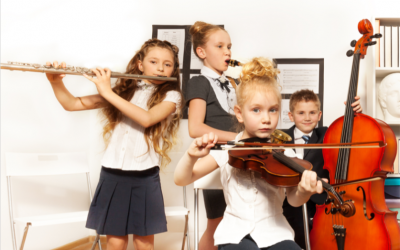facebooktwitterpinterestinstagramyoutubePrivate piano lessons can be very expensive even under normal circumstance, however, over the years, while consulting and helping parents I have seen tons of really terrible mistakes that they make, which in turn end up costing...

6 ‘Shockingly Simple’ Ways To Teach Eighth Notes
6 ‘Shockingly Simple’ Ways To Teach Eighth Notes
See below for a Free Printable Pack to go with the post.
If you’ve looked closely at a sheet of music, you have no doubt realized that it consists of a variety of different types of notes.
Those that are noteheads with no stems, outlined noteheads with stems and solid black notes with stems , flags and beams.
So what does this mean?
Each of these elements like stems, flags and beams signify the type and value of the note and learning to decipher the difference is very important.
Therefore, today I will be explaining how you can introduce ‘Eighth Notes’ to your kids in the homeschool in just six shockingly simple steps.
Don’t forget to download the printable I have included, so you can take your child’s learning to the next level.
Show And Tell
It’s as simple as that.
Just show a flashcard with an Eighth Note, or draw it out on a paper or white board or simply point it out on a piece of sheet music and tell your child that a solid black note with a stem and a flag is called an Eighth Note.
Other Names
Now tell your child that while in North America we call this type of note, an ‘Eighth Note’, in other parts of the world, especially in Asia and Europe the note is called a Quaver.
Clapping And Counting
Now that your child can identify the note and knows both its names, it is time to explain that an Eighth Note/Quaver consists of 1/2 a beat.
This means when played on the piano, you play two eighth notes in 1 beat.
If there are two eighth notes beamed together or separate, then you clap both in quick succession in 1 beat.
Writing The Note
Next, you can show your child how to write an Eighth Note on a line, and in a space, as well as over the stave, hanging from the stave, as Middle C and ledger line notes.
This would also be a good time to teach your child the stem rules and the flag and beam rules.
Identifying Eighth Notes
Now, show your child some sheet music (if you don’t have any handy, use the sheet music in the printable I have made available) and ask your child to identify all the Eighth Notes.
On The Keyboard
Next have your child play Eighth Notes.
For this you can simply draw a treble or bass staff on a piece of paper and write out a few Eighth Notes on different lines and spaces and have your child read the notes.
If your child cannot read music notes as yet, you can still have your child play Middle Cs.
For this you need to draw about four Middle Cs on a paper (as Eighth Notes), have your child play two Middle Cs in quick succession for the 1st beat and the next two in quick succession for the 2nd beat.
Easy enough don’t you think?
Now, don’t forget to download the printable included so you can reinforce the concepts taught here.

Karen Cadera
Founder/Creator
Mom, Teacher, Minimalist, Zero Waste Enthusiast, Multi Pod.
My daughter loved the games, but there were also worksheets and videos. The weekly lesson plans were complete, and I never questioned what I should be doing next.
Download the FREE Music Theory Worksheet
Articles That Maybe Of Interest To You
11 ‘Terribly’ Expensive Mistakes Families Make When Paying For Private Piano Lessons
4 Absolute ‘Must Know’ Ways To Help Your Budding Composer Excel In The Homeschool
facebooktwitterpinterestinstagramyoutubeDo you have a child that is great at creating his or her own music? Even if you don’t think that they he/she is great at it, know that all great composers started somewhere and your child may have the potential to be one as...
3 ‘Shockingly’ Simple Ways To Teach Children To Appreciate Different Genres Of Music In The Homeschool
facebooktwitterpinterestinstagramyoutubeI guess you are surprised to know that there are a variety of very simple ways in which, you can teach your kids to appreciate different genres of music in the homeschool. Yes, even if you have no background in music and no...













